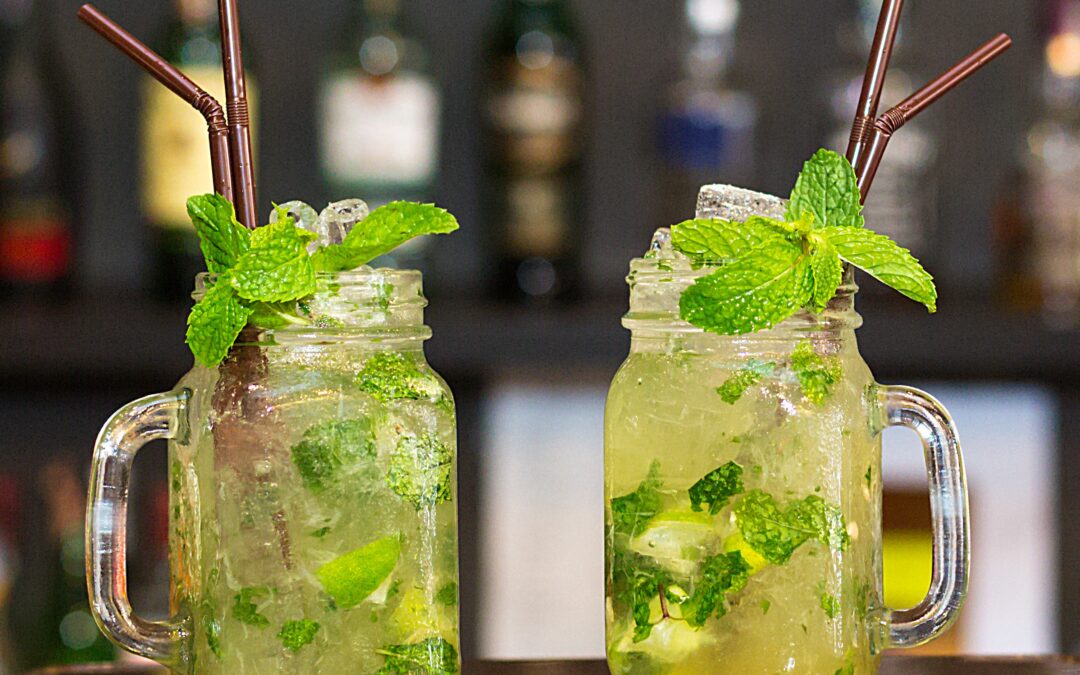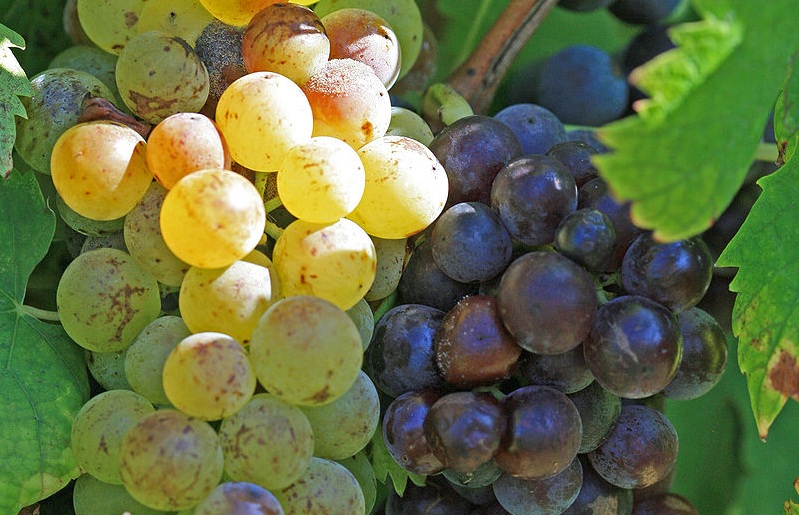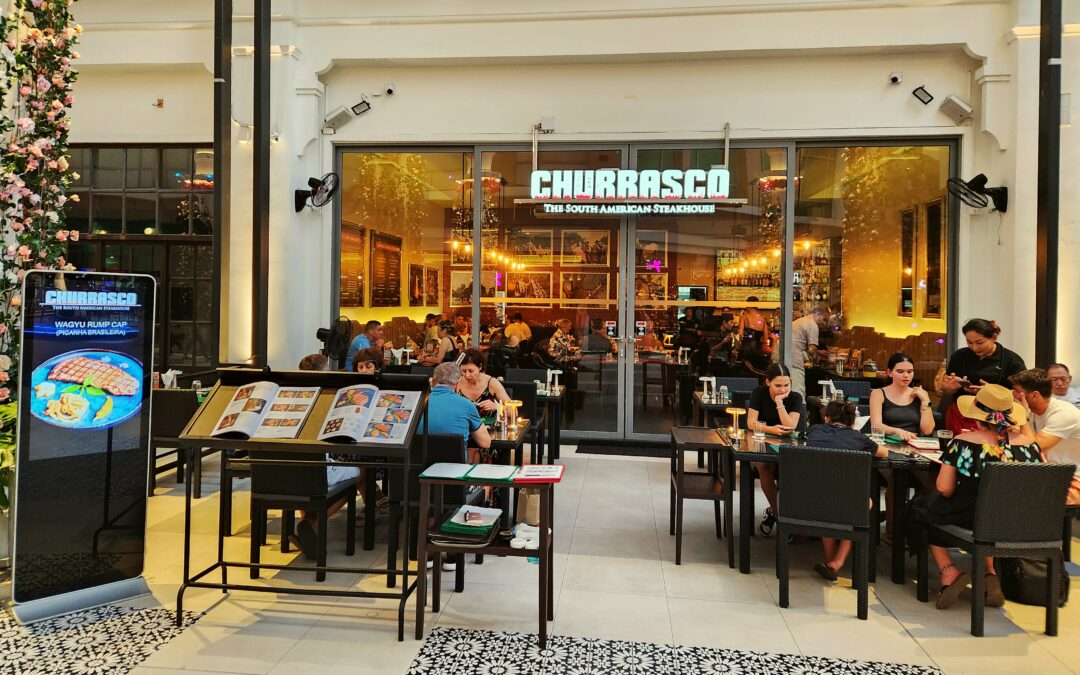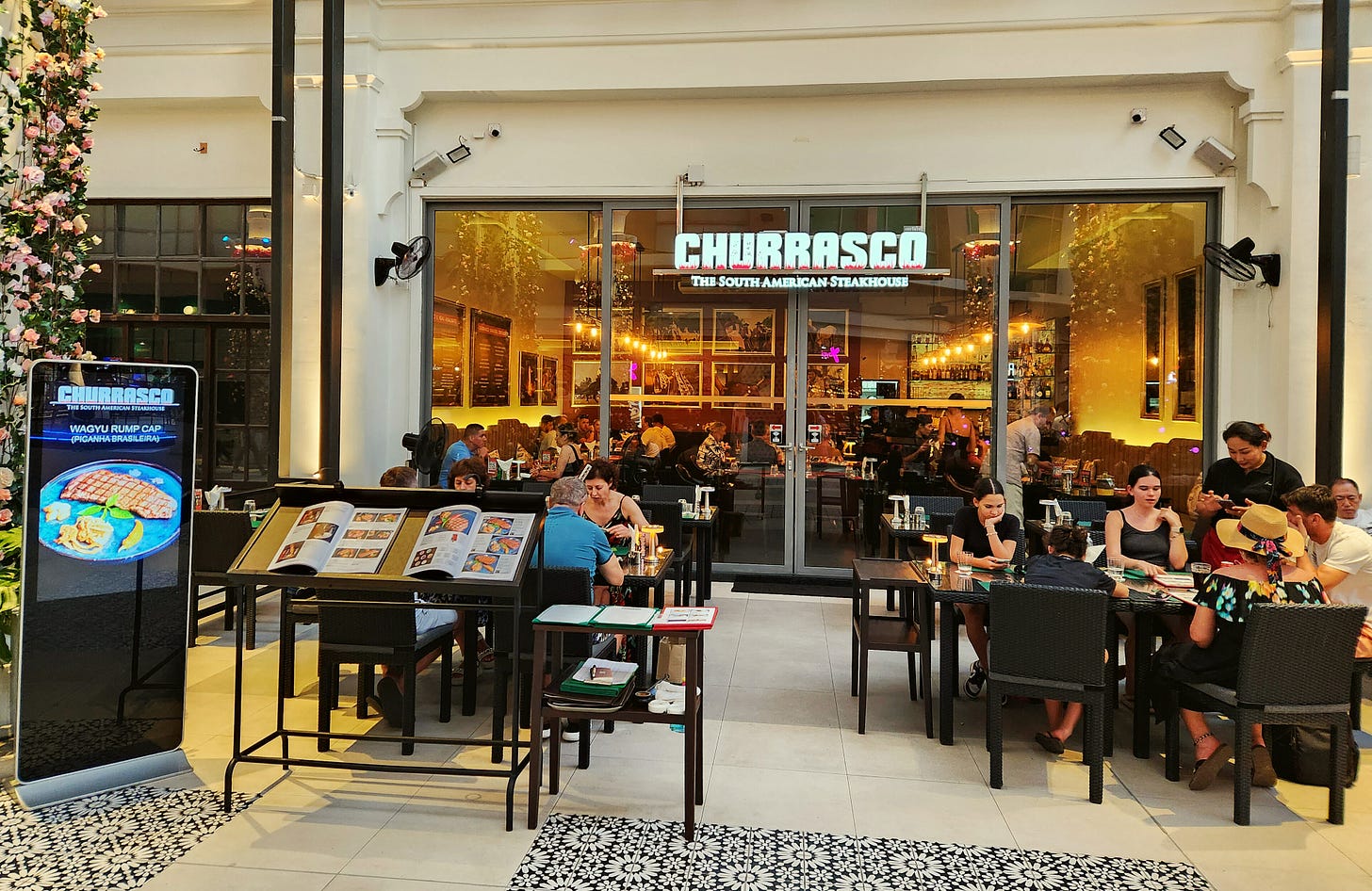
by Ross Kingsley | Apr 20, 2025 | WINES: UNCORKING THE MYSTERY
When thinking of California wine, Napa Valley instantly comes to mind. With its world-class Cabernet Sauvignon, iconic estates, and luxury tasting rooms, Napa has earned its place at the forefront of American winemaking. However, California is far more than just Napa. The state stretches across varied climates, terrains, and microclimates that nurture a remarkable range of grape varieties and styles. Beyond Napa’s spotlight lie several exceptional wine regions, each offering a distinct character and tasting experience. Here are three of California’s most compelling wine destinations that deserve your attention.
Sonoma County: Elegance Meets Earthiness
Just to the west of Napa, Sonoma County spans more than one million acres and encompasses 18 designated American Viticultural Areas (AVAs), from the foggy Russian River Valley to the sun-drenched Dry Creek Valley. With over 60,000 acres of vineyards, Sonoma’s strength lies in its diversity. Its cooler coastal areas are ideal for growing Pinot Noir and Chardonnay, producing wines known for their finesse, balance, and complexity.
The Russian River Valley, in particular, has built a global reputation for elegant Pinot Noir with bright red fruit flavors and silky textures. Sonoma Coast wines, influenced by Pacific breezes, tend to show crisp acidity and a mineral backbone. Chardonnay here often leans toward a leaner, Burgundian style.
But it’s not just about the wine. Sonoma County offers a more laid-back, rustic alternative to the polish of Napa. Many of the wineries are family-owned and committed to sustainable or organic practices. Farm-to-table cuisine, artisan cheese producers, and charming small towns like Healdsburg and Sebastopol add to the appeal. Sonoma is a place where fine wine meets authenticity and a slower pace of life.
Lodi: Zinfandel’s Spiritual Home
Situated in the heart of California’s Central Valley, Lodi has quietly become one of the most exciting wine regions in the state. Though long considered a bulk wine producer, Lodi has undergone a transformation in recent decades. Today, with over 100,000 acres of vineyards, it is best known as the “Zinfandel Capital of the World.” The region’s old vines—many over 50, even 100 years old—produce rich, concentrated wines with ripe berry fruit, spice, and remarkable depth.
Old Vine Zinfandel remains Lodi’s flagship, but the region is far from one-dimensional. Thanks to its Mediterranean climate, Lodi supports over 100 different grape varieties, from Spanish Albariño and Tempranillo to Rhône varietals and classic Bordeaux grapes like Cabernet Sauvignon and Merlot. Innovative winemakers have embraced this diversity, crafting small-batch wines that highlight lesser-known grapes and sustainable farming techniques.
Lodi stands out for its sense of community. Most wineries here are still family-owned, and the tasting rooms tend to be unpretentious, welcoming, and affordable. It’s an ideal destination for wine lovers seeking high-quality wines without the high prices or crowds.
Paso Robles: Bold Wines and Boundary-Pushing Blends
Located halfway between San Francisco and Los Angeles along the Central Coast, Paso Robles has evolved into one of California’s most dynamic wine regions. Once known primarily for rustic Zinfandels, Paso today excels in full-bodied reds—especially Cabernet Sauvignon and Rhône-style blends of Syrah, Grenache, and Mourvèdre.
Paso Robles’ diverse soils, wide diurnal temperature shifts, and warm climate make it a haven for robust, expressive wines. The region is home to more than 200 wineries, ranging from sleek tasting rooms to rustic barns. Winemakers here are known for their experimental spirit, often blending grape varieties not traditionally seen together to produce distinctive wines that reflect both innovation and terroir.
In recent years, Paso Robles has garnered acclaim not just for its wines, but for its food scene and hospitality. The area has embraced culinary tourism, with wine-country restaurants and events that celebrate local ingredients and seasonal flavors.
A Broader Taste of California
From Sonoma’s refined cool-climate varietals and Lodi’s heritage Zinfandels to Paso Robles’ bold innovation, California’s wine story is far richer than just Napa Valley. Each of these regions brings its own history, climate, and personality to the glass. Whether you’re a seasoned wine enthusiast or a casual taster, exploring beyond Napa reveals a Golden State full of vinous surprises—and some of the best wine experiences California has to offer.
Image Credit: https://en.discovercaliforniawines.ca/about-wine-institute/
_ _ _
© CHURRASCO PHUKET STEAKHOUSE / ALL RIGHTS RESERVED
Churrasco Phuket Steakhouse serves affordable Wagyu and Black Angus steaks and burgers. We are open daily from 12noon to 11pm at Jungceylon Shopping Center in Patong / Phuket.
We are family-friendly and offer free parking and WiFi for guests. See our menus, reserve your table, find our location, and check all reviews here:
Home
#churrascophuket #jungceylon #phuketsteakhouse #affordablewagyu #wagyu

by Ross Kingsley | Apr 20, 2025 | LIQUORS: LIFT YOUR SPIRITS
The Mojito is one of the world’s most beloved cocktails, celebrated for its refreshing blend of mint, lime, sugar, and rum. Originating in Cuba, this drink has transcended its roots to become a symbol of relaxation, tropical vibes, and social connection. It is one of two best-selling cocktails at Churrasco Phuket Steakhouse.
A Brief History of the Mojito
The Mojito’s origins date back to 16th-century Cuba, where it was initially known as “El Draque,” named after Sir Francis Drake. Legend has it that the concoction of aguardiente (a precursor to rum), lime, sugar, and mint was used to prevent scurvy among sailors and to mask the harsh taste of early liquors.
As rum production advanced, aguardiente was replaced with refined rum, and the Mojito as we know it was born. By the 20th century, it became a staple in Cuban bars, gaining global fame thanks to Ernest Hemingway, who enjoyed it (apparently too much) at La Bodeguita del Medio in Havana.
Key Ingredients
A classic Mojito consists of five main ingredients:
-
White rum: Provides a smooth and light alcoholic base.
-
Fresh lime juice: Adds tangy, citrusy brightness.
-
Mint leaves: Offers a cooling herbal aroma.
-
Sugar: Balances the tartness of lime and enhances flavors.
-
Soda water: Adds effervescence and dilutes the drink for refreshment.
These ingredients are muddled and mixed to create a harmonious balance of sweet, sour, and herbal flavors.
Cultural Significance
The Mojito is more than a drink; it’s a cultural icon of Cuban heritage. It embodies the laid-back Caribbean lifestyle and is a symbol of celebration and hospitality. Today, it’s a favorite worldwide, enjoyed at beachside bars, upscale restaurants, and casual gatherings.
Whether sipped in its birthplace or recreated abroad, the Mojito remains a timeless reminder of Cuba’s rich history and vibrant culture.
_ _ _
© Churrasco PHUKET STEAKHOUSE / ALL RIGHTS RESERVED
Churrasco Phuket Steakhouse serves affordable Wagyu and Black Angus steaks and burgers. We are open daily from 12noon to 11pm at Jungceylon Shopping Center in Patong / Phuket.
We are family-friendly and offer free parking and WiFi for guests. See our menus, reserve your table, find our location, and check all reviews here:
https://Churrascophuket.com/
#Churrascophuket #jungceylon #phuketsteakhouse #affordablewagyu #wagyu

by Ross Kingsley | Apr 20, 2025 | DECODING GRAPES: FROM VINES TO VINTAGE
Muscat is one of the oldest and most versatile grape varieties in the world. It has captivated wine lovers for centuries with its rich history, diverse styles, and unmistakable aromatic profile, and is celebrated for its floral and fruity character.
Origins and History
The origins of Muscat can be traced back thousands of years to the Mediterranean basin and the Middle East, with evidence suggesting cultivation in ancient Egypt and Persia. Its name likely derives from the Latin “musca,” meaning “fly,” a nod to the grape’s sweetness that often attracted insects. Over centuries, Muscat spread across Europe and Asia, carried by traders, monks, and explorers who recognized its potential for producing everything from table wines to fortified treasures.
Muscat’s family is vast, with over 200 recognized varieties. Among them, Muscat Blanc à Petits Grains, Muscat of Alexandria, and Muscat Ottonel are the most prominent. Each type has unique characteristics, but all share the grape’s hallmark aromatic complexity.
Famous Wines
Muscat is a key ingredient in many iconic wines, renowned for its versatility in producing dry, sweet, sparkling, and fortified styles. Among the most celebrated examples is Moscato d’Asti from Italy’s Piedmont region. This lightly sparkling, sweet wine is cherished for its low alcohol content and flavors of peach, apricot, and honey.
In France, Muscat de Beaumes-de-Venise is a standout fortified wine, offering intense notes of orange blossom, rose, and tropical fruits. Greece’s Samos island produces luscious Muscat-based dessert wines, while South Africa’s Constantia famously incorporates Muscat in its rich, historic Vin de Constance.
Muscat’s adaptability extends to sparkling wines, with Asti Spumante and various Muscat-based offerings from Spain and Australia providing fresh, effervescent drinking experiences.
Geographical Reach
Today, Muscat is cultivated in virtually every major wine-producing region. It thrives in warm, sun-soaked climates, making it a favorite in Mediterranean countries like Italy, France, and Greece. Beyond Europe, Muscat flourishes in South Africa, Australia, and California, showcasing its ability to adapt to diverse terroirs.
This global footprint is a testament to Muscat’s universal appeal. Whether enjoyed as a fragrant dry white, a sweet dessert wine, or a lively sparkler, Muscat remains a cherished grape that bridges tradition and innovation in winemaking.
Conclusion
Muscat’s enduring legacy as a versatile and aromatic grape is undeniable. With its deep roots in history and its far-reaching influence, this remarkable grape continues to enchant wine enthusiasts across the globe. So next time you pour a glass, take a moment to savor the rich heritage behind every sip of Muscat.
Image Credit: Wikipedia.org
_ _ _
© CHURRASCO PHUKET STEAKHOUSE / ALL RIGHTS RESERVED
>>> Reprinting, reposting & sharing allowed, in exchange for a backlink and credits <<<
Churrasco Phuket Steakhouse serves affordable Wagyu and Black Angus steaks and burgers. We are open daily from 12noon to 11pm at Jungceylon Shopping Center in Patong / Phuket.
We are family-friendly and offer free parking and Wi-Fi for guests. See our menus, reserve your table, find our location, and check all reviews here:
https://ChurrascoPhuket.com/
#Churrascophuket #jungceylon #phuketsteakhouse #affordablewagyu #wagyu

by Ross Kingsley | Apr 20, 2025 | BLACK BOX: RANTS, RAVES, REVIEWS & RECIPES
The word churrasco evokes the irresistible aroma of meat sizzling over open flames, but its meaning and culinary significance stretch far beyond just a grilled steak. Rooted deeply in South American tradition, the term has evolved over centuries to represent not just a cooking method, but an entire cultural experience. Today, churrasco has found homes far from its origins—including Phuket, Thailand—where it continues to impress meat lovers with its bold flavors and festive presentation.
The Etymology of “Churrasco”
The term churrasco originates from Portuguese and Spanish, and its earliest recorded use traces back to Iberian pastoral traditions, where gauchos (South American cowboys) cooked meat over open fires on the Pampas. While the precise etymology remains uncertain, many believe it’s derived from indigenous or old Iberian expressions relating to roasted meat.
As Spanish and Portuguese settlers brought their languages and customs to South America, churrasco evolved regionally, becoming synonymous with specific grilling methods and communal dining practices.
Brazil: Churrasco as a Cultural Ritual
In Brazil, churrasco is more than just grilled meat—it’s a social event, often held in backyards or at churrascarias (Brazilian steakhouses). The Brazilian version typically involves skewering large cuts of beef, pork, chicken, or even sausage, then slowly roasting them over a churrasqueira (barbecue grill), traditionally fueled by charcoal or wood.
The meat is seasoned simply with coarse salt and carved tableside in the classic rodízio style, where servers circulate through the dining room offering various cuts until the guest signals they are full. It’s a format that emphasizes abundance, choice, and the joy of sharing food.
Argentina and Uruguay: Asado vs. Churrasco
In neighboring Argentina and Uruguay, the term churrasco does exist, but it generally refers to a thin steak, usually grilled and served with chimichurri sauce. However, the more culturally prominent term is asado, which refers both to the meat and the cooking technique, often involving a wood fire and a slow, deliberate grilling process.
In these countries, the social function of meat grilling mirrors that of Brazil: it’s a ritual, a gathering, and a national pride.
Chile: Simplicity with a Unique Touch
In Chile, churrasco commonly describes a sandwich made from thinly sliced beef, typically served on a bun with ingredients like avocado, mayonnaise, tomato, and sauerkraut. Unlike the barbecue-heavy interpretations in Brazil or Argentina, the Chilean churrasco leans more toward street food and casual dining but retains the essence of grilled beef as the star of the dish.
Churrasco Around the World
The popularity of churrasco has transcended South America. Variations of churrasco-style grilling are now found globally, particularly in the United States, Europe, and Asia. Many steakhouses adopt the rodízio model to offer an immersive, all-you-can-eat experience. Yet, few establishments manage to balance authenticity, quality, and affordability as successfully as Churrasco Phuket Steakhouse in Thailand.
Churrasco Phuket Steakhouse: Tradition Meets Value
Founded in January 2012, Churrasco Phuket Steakhouse has brought the spirit of Brazilian churrasco to the heart of Patong. Unlike many international adaptations that dilute the original intent, this steakhouse honors the core traditions—quality cuts, proper grilling techniques, and a warm, service-oriented atmosphere.
What sets Churrasco Phuket apart is its emphasis on value for money. While many steakhouses in Phuket veer toward exorbitant pricing, Churrasco Phuket offers premium Wagyu steaks and burgers at competitive prices. Regular favorites like Picanha, Ribeye, Tenderloin, and Oyster Blade are cooked to exacting standards—especially their medium rare, which regulars claim is always nailed to perfection.
Conclusion: A Term That Means More Than Meat
From the gauchos of Brazil to the cosmopolitan beaches of Phuket, churrasco has traveled far—without losing its roots. It remains a symbol of communal dining, quality meat, and culinary heritage. Whether you’re savoring skewered cuts in Porto Alegre or biting into a juicy Wagyu burger in Patong, you’re tasting more than just grilled meat. You’re experiencing a piece of cultural history, carried through flame and flavor.
Image Credit: https://churrascophuket.com
_ _ _
© CHURRASCO PHUKET STEAKHOUSE / ALL RIGHTS RESERVED
Reprinting, reposting & sharing allowed, in exchange for a backlink and credits
Churrasco Phuket Steakhouse serves affordable Wagyu and Black Angus steaks and burgers. We are open daily from 12noon to 11pm at Jungceylon Shopping Center in Patong / Phuket.
We are family-friendly and offer free parking and Wi-Fi for guests. See our menus, reserve your table, find our location, and check all guest reviews here:
https://ChurrascoPhuket.com/
#Churrascophuket #jungceylon #phuketsteakhouse #affordablewagyu #wagyu

by Ross Kingsley | Apr 13, 2025 | RESTAURANT BUSINESS: BEHIND THE KITCHEN DOOR
In the hospitality industry, providing great service often means navigating complex human behavior. While most guests are friendly and reasonable, a small percentage can pose real challenges. Understanding how to manage and de-escalate problematic guest types is key to maintaining professionalism, protecting your team’s morale, and ensuring a smooth operation.
Here’s a look at three of the most frustrating types of guests—and how to handle them calmly and effectively.
1. The Entitled Complainer
Who they are:
This guest believes the rules don’t apply to them. Whether they demand discounts, special treatment, or compensation for minor inconveniences, their default mode is dissatisfaction. They may exaggerate complaints to leverage perks or insist that “the customer is always right,” even when clearly in the wrong.
How to deal with them:
Listen first. Let them speak without interruption to avoid escalating their frustration. Acknowledge their feelings, even if you disagree with their logic. Use neutral phrases like, “I understand why you’d feel that way,” rather than agreeing outright. Then, clearly explain any policies involved and offer a fair solution within the limits of your business. Avoid setting a precedent of rewarding rudeness. If necessary, escalate to a manager—but always stay calm and polite.
2. The Chronic Rule-Bender
Who they are:
These guests ignore house rules, from sneaking in outside food to smoking in non-smoking areas or showing up late and expecting full service. They’re not always aggressive, but they regularly push boundaries and expect leniency.
How to deal with them:
Set clear expectations early. Point out rules calmly but confidently, using signage or prior communication as backup. For example: “Just a reminder, our smoking area is outside by the gate.” Be consistent in enforcing policies; bending rules for one guest undermines your credibility with others. If they repeat the offense, issue a firm but polite warning. If needed, explain the consequences—without threats, just facts. Documentation also helps if the situation escalates.
3. The Loud Disrupter
Who they are:
This type isn’t necessarily angry, but their behavior is disruptive to the atmosphere. They talk loudly on phones, play videos without headphones, or argue publicly with staff or companions. Their behavior often affects other guests, not just your team.
How to deal with them:
Approach discreetly and kindly, ideally away from other guests. Use “we” language to avoid singling them out: “We’ve had a few guests mention the volume—would you mind lowering your voice just a little?” Most aren’t trying to be rude and will cooperate when approached respectfully. If they resist, explain how it’s affecting others. Always prioritize de-escalation over confrontation. Your tone—calm, respectful, and professional—is the best tool in these moments.
Final Thought
Handling difficult guests isn’t about winning an argument; it’s about controlling the tone of the interaction and guiding it toward a resolution. By recognizing common guest behaviors and staying calm under pressure, staff can diffuse tension without sacrificing dignity or service quality. Boundaries, patience, and consistency are your best tools—and often the difference between a bad situation and a manageable one.
Image Credit: https://churrascophuket.com
_ _ _
© CHURRASCO PHUKET STEAKHOUSE / ALL RIGHTS RESERVED
Reprinting, reposting & sharing allowed, in exchange for a backlink and credits
Churrasco Phuket Steakhouse serves affordable Wagyu and Black Angus steaks and burgers. We are open daily from 12noon to 11pm at Jungceylon Shopping Center in Patong / Phuket.
We are family-friendly and offer free parking and Wi-Fi for guests. See our menus, reserve your table, find our location, and check all guest reviews here:
https://ChurrascoPhuket.com/
#Churrascophuket #jungceylon #phuketsteakhouse #affordablewagyu #wagyu









